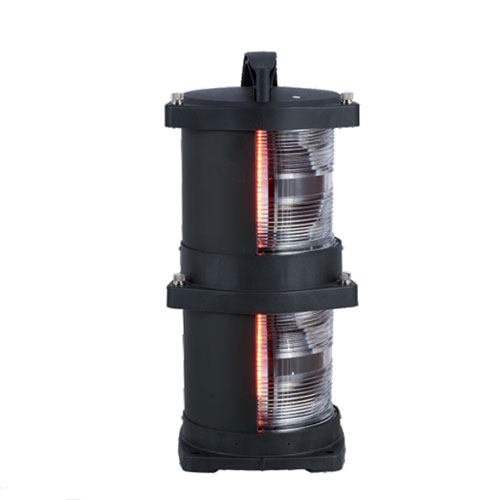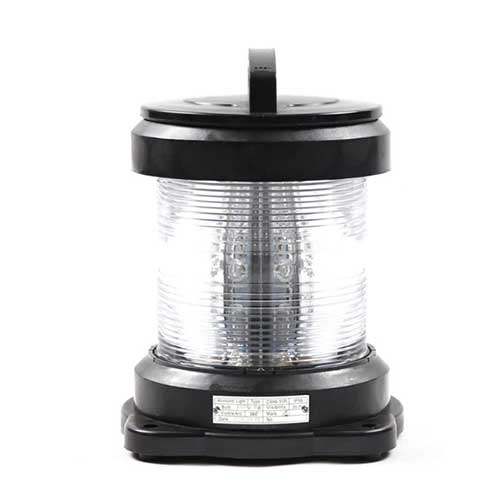Navigating the vast and often perilous expanses of the world's oceans has been a challenge throughout history. The maritime sector places a high priority on the safety of ships, crews, and cargo, with navigation lights being a crucial element in ensuring this safety. Marine navigation lights play a vital role in avoiding collisions, guiding vessels through congested waterways, and maintaining order on the high seas. In this article, we will explore how navigation lights contribute to enhancing maritime safety.

Understanding Navigation Lights
Navigation lights, also referred to as running lights, are specialized lighting systems installed on all types of vessels, from small pleasure crafts to massive cargo ships and oil tankers. These lights serve two primary functions:
Collision Avoidance: Navigation lights enable mariners to assess the direction, size, and type of approaching vessels. This information is essential for preventing collisions, allowing ships to take evasive action when necessary. Different combinations of lights indicate a vessel's condition and direction of movement.
Position Indication: These lights help vessels determine their relative position in relation to other ships. By observing nearby vessels' lights, mariners can ascertain whether they are on a collision course or safely passing each other.
Common Types of Navigation Lights
The International Maritime Organization (IMO) has established the International Regulations for Preventing Collisions at Sea (COLREGs), which mandate the use of navigation lights and define their configurations. Here are some commonly used types:
Masthead Light: A white light located at the forward end of a vessel, typically at the mast's highest point. It is visible from the front and sides and indicates the vessel's presence and direction.
Port (Red) and Starboard (Green) Lights: Colored lights situated on the vessel's left (port) and right (starboard) sides, respectively. These lights are critical for determining a ship's course.
Stern Light: A white light at the vessel's stern (rear), visible from behind and within a 135-degree arc on either side. It helps other vessels determine a ship's direction and relative position.
Towing Lights: Additional lights displayed on tugboats and vessels towing objects such as barges. These lights indicate the towing configuration and length.
Special Lights: Certain types of vessels, such as pilot boats, fishing vessels, and those restricted in their maneuverability, display unique lights to convey their status and intentions.

Strategies for Enhancing Maritime Safety with Navigation Lights
Navigation lights are a critical component of maritime safety, and it is imperative that all seafarers understand and utilize them correctly. Here are various strategie aimed at enhancing safety through navigation lights:
Adherence to COLREGs: Compliance with the International Regulations for Preventing Collisions at Sea (COLREGs) forms the foundation of navigation light safety. These regulations standardize navigation light arrangements, ensuring consistency in conveying information.
Proper Use and Maintenance: Regular inspections and maintenance procedures are essential to ensure that navigation lights are properly fitted, well-maintained, and in good working condition. This prevents equipment failures that could compromise safety.
Clear Visibility: Visibility is crucial for navigation lights to function effectively. Strategies for improving visibility include using clean and undamaged light fixtures, ensuring lights are not obstructed by cargo or equipment, and replacing worn or faded lenses.
LED Technology: Modern vessels are increasingly adopting LED navigation lights due to their energy efficiency, longer lifespan, and brighter illumination. LED lights offer improved visibility and are less prone to malfunction than traditional incandescent lights.

Backup and Redundancy: Having backup navigation lights and power sources onboard is a safety measure. These backups ensure that vessels can continue to display required lights in case of primary light failure or power outage.
Training and Awareness: Crew members should be well-versed in the use and interpretation of navigation lights. Raising awareness of the importance of navigation lights and their role in collision avoidance ensures compliance and understanding.
Automated Light Control Systems: Some ships are equipped with automatic light control systems that adjust the intensity and angle of navigation lights based on factors such as visibility conditions and vessel speed. These systems improve visibility and conserve energy.
Advanced AIS Technology: The integration of Automatic Identification System (AIS) technology with navigation lights provides real-time vessel identity, position, and course information to other vessels equipped with AIS receivers.
Enhanced Light Synchronization: Coordinating navigation light patterns with traffic movement can improve safety in congested rivers and ports, preventing confusion by ensuring nearby vessels have similar lighting settings.
Dynamic Positioning Systems: Modern vessels equipped with dynamic positioning systems can automatically control their location and direction. This helps ensure that navigation lights are always pointing in the right direction, enhancing visibility.
Incorporating LED Light Bars: LED navigation lights are commonly used on modern warships due to their energy efficiency, extended lifespan, and improved illumination, enhancing safety.
Integration with Bridge Systems: Modern bridge systems often integrate navigation light control, AIS data, and radar data on a single display. This integration enhances situational awareness and simplifies monitoring of nearby vessels.
Continuous Assessment and Improvement: Maritime operators should regularly evaluate their vessels' navigation light systems and safety practices. Staying updated with advancements in navigation light technology and regulations is essential, and equipment should be updated as needed.
Conclusion
Navigation lights are a vital component of maritime safety, enabling vessels to communicate their presence, status, and intentions to one another. By adhering to international regulations governing navigation lights, mariners can navigate the world's waterways with confidence, reduce the risk of collisions, and safeguard the safety of their crews, cargo, and the marine environment.
